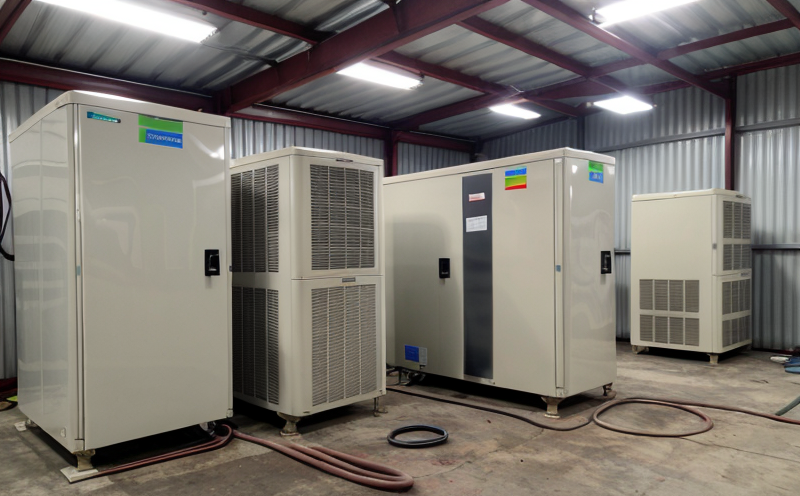ISO 14276-4 Bubble Leak Detection Method
The ISO 14276-4 bubble leak detection method is a critical standard for the testing of HVAC refrigerant systems, ensuring their integrity and efficiency. This method helps identify even minute leaks in systems, which are essential for maintaining optimal performance and compliance with environmental regulations.
Refrigerants used in HVAC systems play a vital role in energy efficiency by enabling effective heat transfer, but they also pose risks if not properly managed. The ISO 14276-4 standard provides a robust framework to detect leaks early, preventing the release of harmful refrigerants into the environment and ensuring safe operation.
The process involves pressurizing the HVAC system with a specified gas or refrigerant, then visually inspecting it for bubbles using soapy water. This non-destructive testing technique is highly sensitive and can detect leaks as small as 0.1% of the total charge. The method's precision ensures that any issues are identified before they escalate into major problems.
Compliance with this standard is crucial for businesses operating in sectors such as HVAC manufacturing, installation, and service. By adhering to ISO 14276-4, companies can demonstrate their commitment to quality control and environmental responsibility. This not only enhances customer satisfaction but also supports the overall sustainability goals of their operations.
For R&D engineers, this method offers a reliable way to refine product designs by identifying potential issues early in the development process. In procurement, ensuring suppliers meet these standards can help maintain consistent quality and reliability across all components used in HVAC systems.
Customer Impact and Satisfaction
The implementation of ISO 14276-4 bubble leak detection method has a direct positive impact on customers by ensuring the long-term reliability and efficiency of their HVAC systems. By detecting leaks early, we help prevent costly repairs and premature replacement of equipment. This not only extends the lifecycle of HVAC units but also reduces operational costs associated with energy consumption and maintenance.
Our testing service ensures that refrigerant charges are accurately maintained, which translates to better performance and reduced downtime for customers. This leads to increased customer satisfaction as they experience more efficient systems operating at optimal levels. Compliance with this standard is not just a regulatory requirement; it's an investment in long-term business success.
In addition to the technical benefits, our service also contributes to environmental sustainability by minimizing the release of refrigerants into the atmosphere. This aligns perfectly with global efforts to reduce greenhouse gas emissions and supports customers' own environmental initiatives.
Environmental and Sustainability Contributions
- By detecting leaks early, we prevent the release of harmful refrigerants into the atmosphere, which contributes to reducing greenhouse gas emissions.
- The method ensures that HVAC systems operate at peak efficiency, thereby minimizing energy consumption and supporting sustainable practices.
- Through precise leak detection, we help extend the lifecycle of HVAC equipment, promoting resource conservation and waste reduction.
- This service aligns with global environmental goals by contributing to cleaner air and reduced carbon footprints in commercial and industrial settings.
Competitive Advantage and Market Impact
Adopting the ISO 14276-4 bubble leak detection method provides a significant competitive advantage by ensuring that HVAC systems meet or exceed industry standards. This not only enhances customer satisfaction but also builds trust and loyalty, which are crucial for business growth.
By demonstrating compliance with this standard, companies can differentiate themselves from competitors who may not adhere to the same level of quality control. This competitive edge is particularly important in sectors where reliability and sustainability are key factors in consumer decision-making.
The market impact of our service extends beyond individual clients; it contributes to broader industry trends towards more sustainable practices. By leading by example, we encourage other companies to adopt similar standards, fostering a culture of environmental responsibility within the sector.





